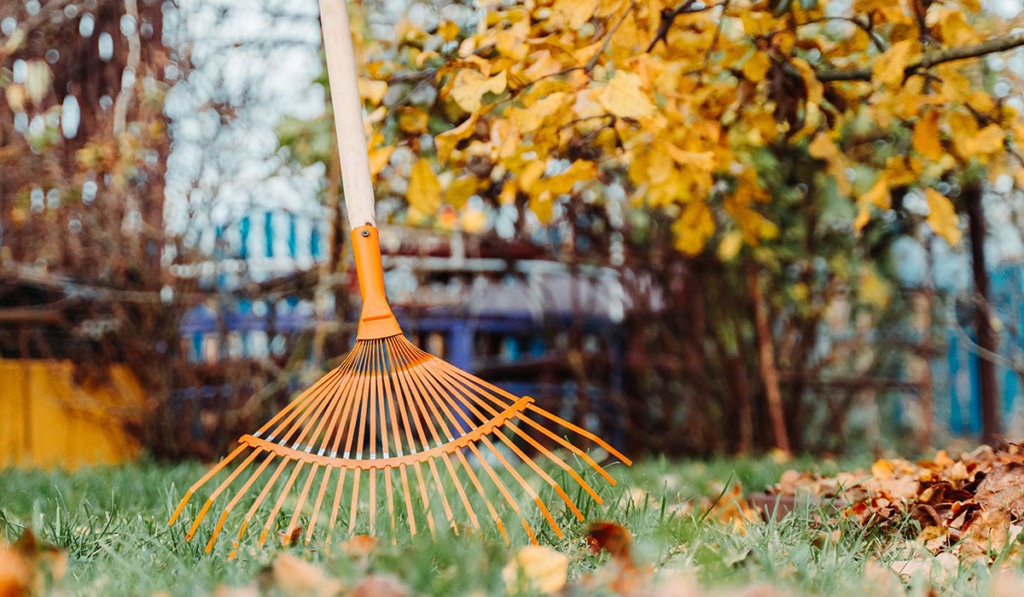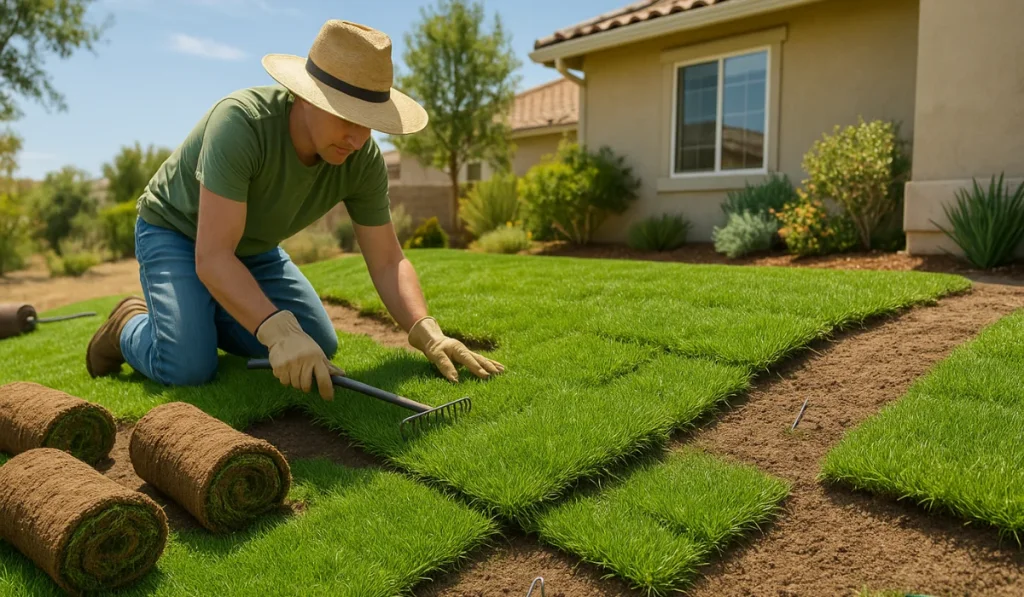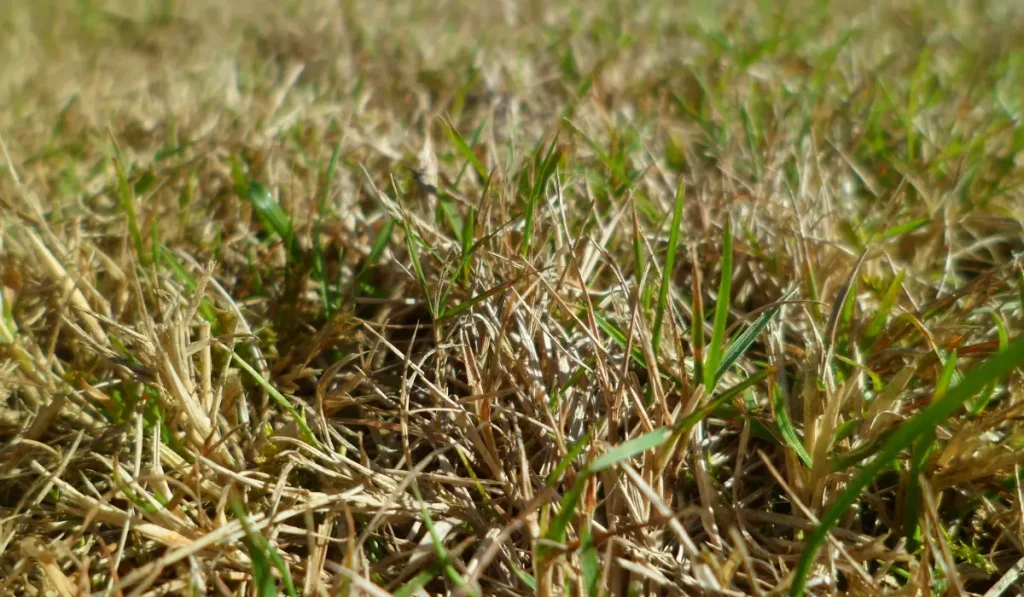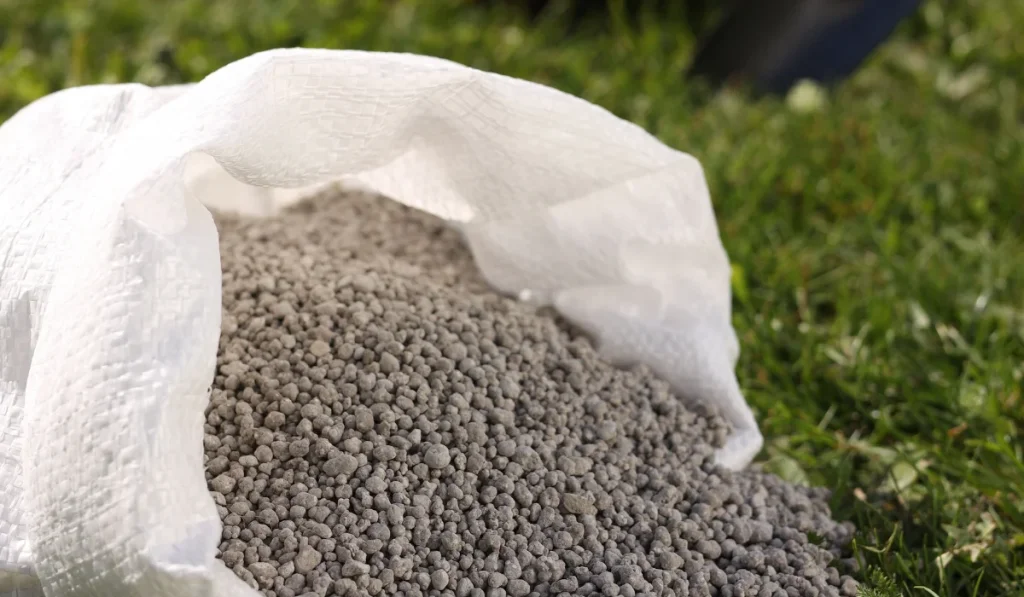According to a survey conducted by the National Association of Landscape Professionals, although 74 percent of Americans who have a lawn reported knowing how to care for them, many lacked basic lawn care knowledge.
So we’ve compiled for you some easy steps to prepare your lawn for the harsh weather so that you can enjoy a healthy lawn when spring bounces back.
1. Clean Up Debris
Cleaning your lawn is the first step in preparing it for the winter. Remove all leaves, debris, branches, and logs from the grass. Piled debris blocks the light and traps moisture, leading to mold and other fungal diseases. So rake leaves and debris as often as you can to avoid large dead spots on your lawn when spring arrives.
2. Remove Weeds
If weeds are not removed before winter, they will come back to wreak havoc on your lawn during spring. The weed seeds can get widely distributed during winter and compete with the grass for resources like nutrients, light, and water.
Hence, pulling weeds before winter is essential to keep your yard in good shape. A suitable herbicide can help you with the job. However, you have to apply herbicide strategically to not damage your lawn during the process. This guide on weed control for your lawn will help you deal with the weeds without affecting the turf.
3. Adjust Mower Height
You are likely to mow your lawn a lot less in winter. Raise the mower half to one inch above the usual summer height for the last few mows. By doing so, you increase the leaf area of the grass, allowing it to capture more sunlight and store food as winter arrives.
However, the final cut before the snow arrives should be made by lowering your mower blade to half an inch below the standard height. Cutting the grass short before the cold prevents it from developing snow mold and encourages deeper root growth.
4. Fertilize
Give your lawn another dose of fertilizer before winter hits hard. Fertilizers provide additional nutrients to the grass, which they store in their roots as a reserve to draw from when needed. The fuel enables them to survive winter and grow faster and thicker in spring.
So bring out your fertilizers during October-November before your grass starts to discolor. It’s better to use organic lawn fertilizers.
5. Aerate Your Lawn
Aerating involves boring small holes in the yard to remove compacted soil. The holes provide a passage for air, water, and fertilizers to penetrate deeper into the ground and reach the roots where they can be the most beneficial. Aerating is one of the best things you can do to promote stronger roots and prepare your lawn for winter.
Aerate your lawn four weeks before the frost arrives so the grass has time to recover. There are several tools to help you aerate. A pair of aerating shoes is enough for a small lawn. The spikes in the shoes will aerate your soil.
For larger lawns, you would require a motor aerator. The machines, however, are pretty heavy and require strength and skill to operate.
6. Fill in Bare Patches/Overseed
No one likes to see bare patches on their lawns. If you’re planning to fill bare patches and add extra grass to your lawn, no time is better than fall. There aren’t any spring weeds hogging resources and nutrients during winter, giving your grass seeds a better chance at growth. What’s more, you’ll have a lush green lawn to show off as spring rolls around.
For best results, go for cool-season grass seeds and apply them generously with the help of a spreader. Make sure to water them regularly until the first sprouts appear.
7. Dethatch
Dethatching is the process of removing a layer of dead grass collected between the soil and the grass foliage. If you haven’t already dethatched, do so now. Too much thatch build-up prevents the grass from getting the essential nutrients. Getting nutrients is especially important before winter as your lawn prepares for hibernation. So use a mower or a thatch rake and get rid of unwanted thatch.
8. Cut Off Water
With the decrease in temperature, your water needs also decrease. As a result, your lawn does not require as much watering in the winter as it does in the summer. So be mindful of your irrigation schedule, especially if you have automated irrigation systems. You might harm your lawn by over saturating it with excess water. So cut back on irrigation ahead of winter and save water and money.
9. Prune and Protect Your Trees and Shrubs
Preparing your trees for the winter is mostly about creating an environment for them to hibernate happily. Hence, removing dead and infected parts from your trees before winter is necessary to avoid fungus or insect infestation and prepare them for their long rest. Besides, overgrown trees and shrubs are likely to block sun rays leaving portions of your lawn sun-starved.
However, make sure to use clean and disinfected tree cutting tools for pruning to avoid spreading disease from one plant to another.
10. Mulch the Perennials
Most perennials go dormant during the winter. Apply a layer of mulch to prepare them for the cold. You can use the raked leaves to create an organic mulch. Other excellent mulches include bark chips, straws, evergreen boughs, and other coarse organic materials for winter. The mulches act as an insulating blanket protecting the plants from extreme temperatures.
Conclusion
As you see, preparing your lawn for winter is not that hard when you have the right tools and tips in hand. A little effort will go a long way in keeping your yard clean and healthy even in the cold season.



